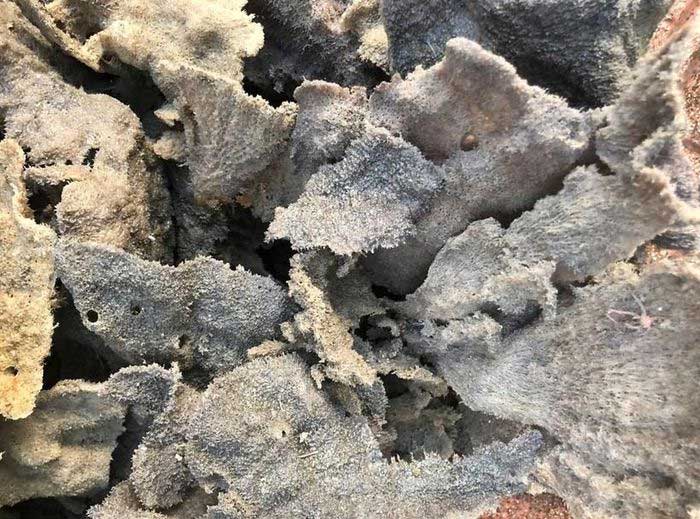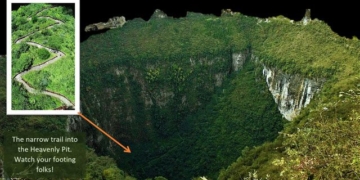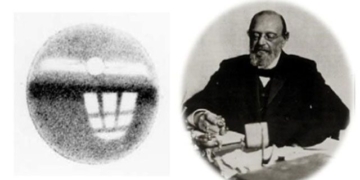Associate Professor, Dr. Phan Van Kiem stated that sponges belong to the scientific classification of the phylum Porifera within the animal kingdom, specifically categorized as invertebrates.
Over 80 compounds have been isolated from several sponge species living in the waters of Khanh Hoa – Binh Thuan, including some compounds with cytotoxic effects on cancer cells, which is a result of research conducted by Vietnamese scientists.
Identification of 84 Compounds
Associate Professor, Dr. Phan Van Kiem and his colleagues from the Institute of Marine Biochemistry, Vietnam Academy of Science and Technology have recently discovered 23 new compounds among 84 isolated compounds from certain sponge species found in the waters of Khanh Hoa – Binh Thuan.

Ianthella basta species (also known as elephant ear sponge).
The research team also identified two compounds with strong cytotoxic activity, which are found in high concentrations in the Ianthella basta sponge species, demonstrating potential for developing research aimed at creating products to assist in cancer treatment.
Associate Professor, Dr. Phan Van Kiem explained that sponges are classified within the phylum Porifera and are among the most primitive multicellular animals still extant. Due to their lack of specialized tissues and organs, absence of a nervous system, and unstable symmetry, they are categorized as incomplete multicellular organisms (pseudo-multicellular). Sponges adapt to a benthic lifestyle and currently exist in only four classes: Demospongiae, Calcarea, Hexactinellida, and Homoscleromorpha.
To date, there has been very little research on sponges related to species composition, distribution, and particularly on their chemical composition and biological activity in the maritime regions under Vietnam’s sovereignty.
Associate Professor, Dr. Phan Van Kiem noted that studying the chemical composition of marine organisms, including sponges in Vietnam, often faces challenges at many stages due to the research subjects living underwater, necessitating modern equipment and experienced marine biologists. The active compounds often exist in low concentrations and are easily degraded under conventional storage and extraction conditions.
The team of scientists conducted research on the chemical composition and anti-cancer effects of compounds isolated from sponges living in the coastal region of South Central Vietnam under the project titled “Research on the exploitation of sponge medicinal materials in the South Central Region (Khanh Hoa – Binh Thuan waters) aimed at cancer cell cytotoxic activity to create products that assist in cancer treatment.”
The research team studied the chemical composition of 10 sponge samples, isolating and identifying 84 different compounds using chromatography techniques. Among the 84 identified compounds, 23 were newly discovered, including 5 compounds with novel carbon frameworks.
Assessment of Cytotoxic Activity on Cancer Cells
The scientists assessed the cytotoxic activity in vitro on 5 cell lines, including LU-1 (lung cancer), MCF-7 (breast cancer), HepG2 (liver cancer), SK-Mel2 (skin cancer), and HEK-293A (human embryonic kidney cells).
The team observed that 13 compounds exhibited cytotoxic activity with IC50 values.
The research results indicate that the compounds RG1, RG2, RG8, CR5, IB2, and IB5 are effective cytotoxic compounds with unique chemical structures, and their concentrations have been quantified in the methanol extract residues of their respective sponge species.
Notably, two compounds IB2 and IB5 have IC50 values around 1 µM, which is lower than that of the positive control ellipticine, and they are present in relatively high amounts (1.11% and 0.64% by weight) in the methanol extract of Ianthella basta; showing potential for large-scale extraction and purification of active compounds to develop products aimed at assisting in cancer treatment.
Associate Professor, Dr. Phan Van Kiem affirmed that the research results from this project provide important scientific foundations contributing to the discovery of the diverse chemical composition of sponges in Vietnam’s maritime areas, the biological activity of these compounds, and serve as a basis for developing health protection products from them.




















































